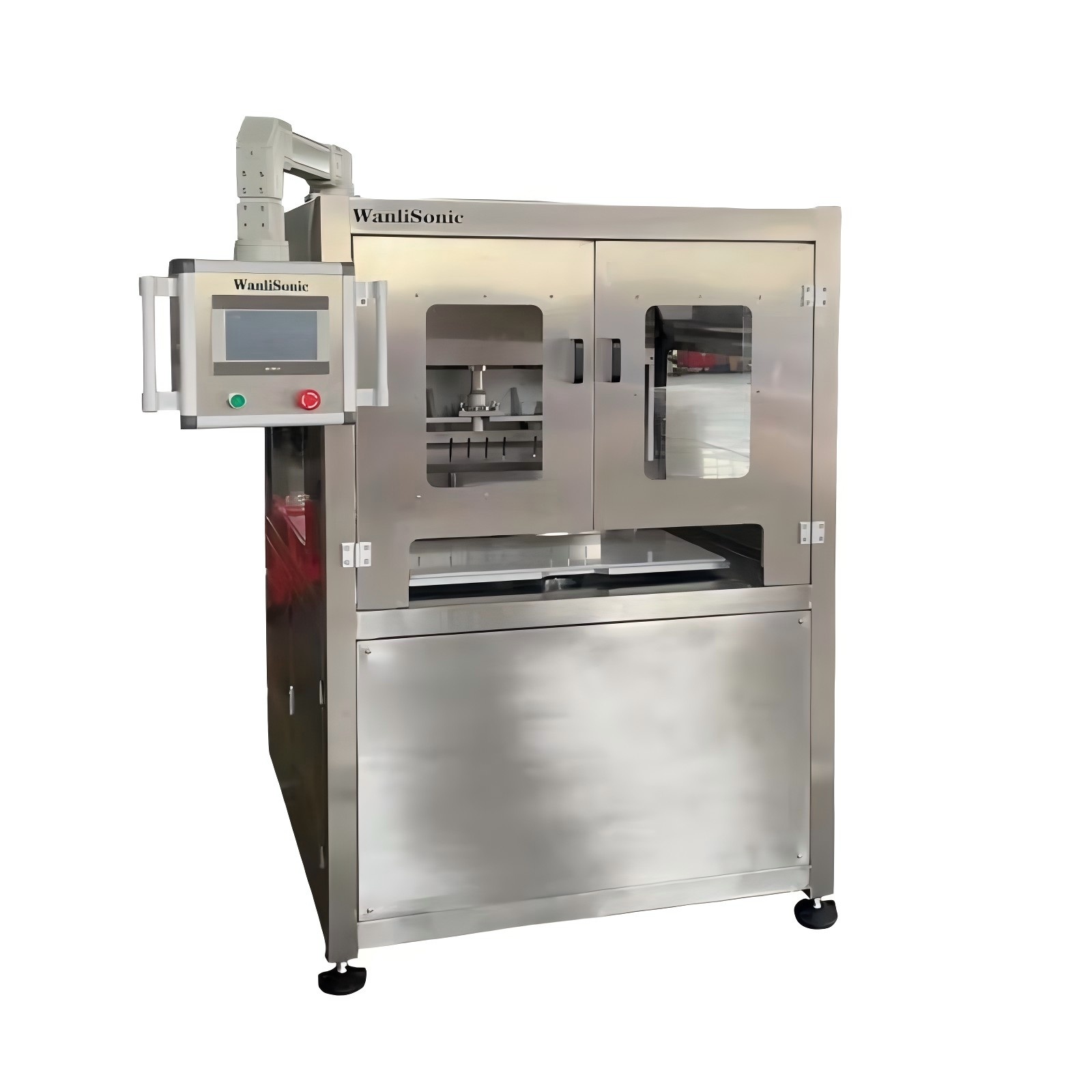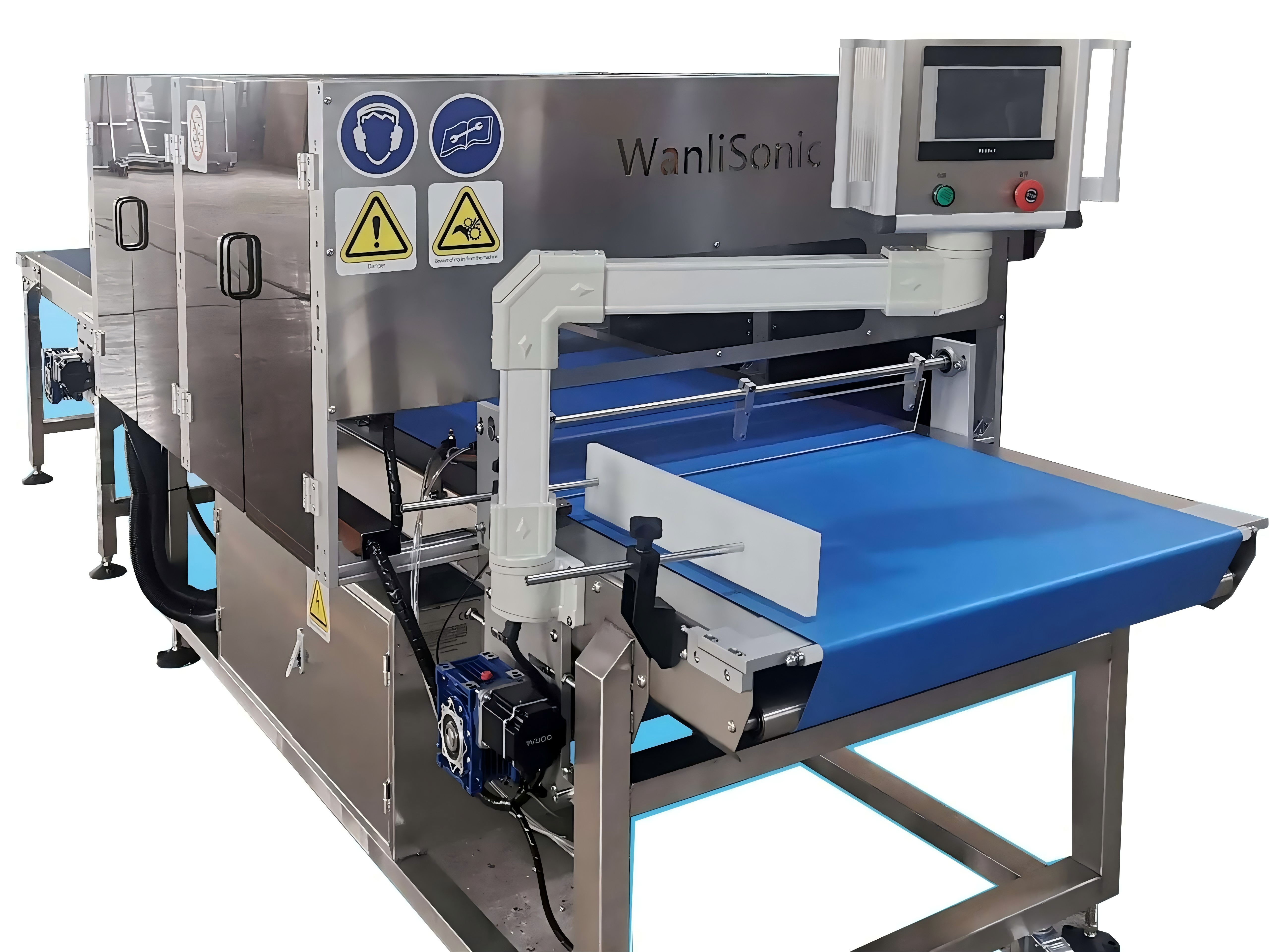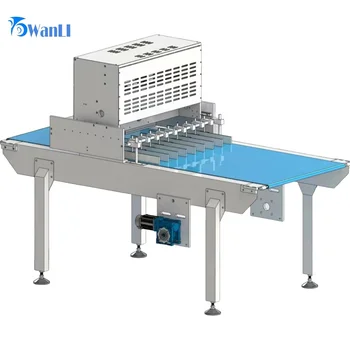The Halva bar ultrasonic cutting machine is a specialized piece of equipment designed to cut halva, a popular Middle Eastern confectionery made from tahini, sugar, and other ingredients. These machines use high-frequency ultrasonic vibrations to precisely and cleanly cut the halva into uniform shapes and sizes, making them an essential tool in the production and packaging of halva.
The working principle of the Halva bar ultrasonic cutting machine is based on the use of ultrasonic vibrations to create a precise, clean cut. When the machine is turned on, an ultrasonic generator produces high-frequency vibrations that are transmitted through a metal blade or knife. These vibrations create a microscopic sawing action, allowing the blade to cut through the halva without crushing or deforming it.
One of the key advantages of using ultrasonic vibrations to cut halva is that the process generates minimal heat and friction. This means that the halva is not damaged or melted during the cutting process, and the final product maintains its shape and quality.
In addition to the ultrasonic generator and blade, the Halva bar ultrasonic cutting machine also includes a number of other components that help to control and optimize the cutting process. These can include things like adjustable cutting speeds, multiple cutting blades, and sensors to ensure accurate and consistent cuts. Some models may also have additional features like automatic feed and ejection systems, which can further improve efficiency and productivity.
The service life of a Halva bar ultrasonic cutting machine can vary depending on a number of factors, including the quality of the machine, the frequency and intensity of use, and the level of maintenance performed. In general, these machines are designed to be long-lasting and require minimal maintenance, so they can provide reliable performance for many years with proper care.
To maximize the service life of a Halva bar ultrasonic cutting machine, it is important to follow the manufacturer’s recommended maintenance schedule. This may include regular cleaning and inspections to ensure the machine is in good working order. It is also a good idea to keep the machine properly lubricated and to replace any worn or damaged parts as needed.
Overall, the Halva bar ultrasonic cutting machine is a highly specialized and efficient piece of equipment that is essential for the production and packaging of halva. Its ability to precisely and cleanly cut through dense, sticky materials like halva without damaging them makes it an ideal tool for a variety of applications. By following proper maintenance practices, these machines can provide reliable performance and a long service life.
There are several key features that distinguish halva bar ultrasonic cutting machines from other types of cutting equipment. One of the most important is the ability to cut through dense, sticky materials like halva without crushing or deforming them. This is made possible by the ultrasonic vibrations, which create a clean, precise cut without generating significant heat or friction.
In terms of performance, halva bar ultrasonic cutting machines are known for their high speed and efficiency. They can cut through large volumes of halva quickly and accurately, with minimal waste and minimal downtime for maintenance. Some models are also equipped with features like adjustable cutting speeds and multiple cutting blades, which can help to further optimize cutting performance and efficiency.
There are several advantages to using halva bar ultrasonic cutting machines. In addition to their speed and efficiency, these machines are also very easy to use and maintain. They require minimal operator training, and many models are equipped with simple, user-friendly controls. Additionally, the ultrasonic cutting process generates minimal heat, so there is little risk of damaging or melting the halva during the cutting process.
In terms of market prospects, halva bar ultrasonic cutting machines are expected to have strong demand in regions where halva is a popular confectionery. This includes countries in the Middle East, as well as other areas with large Middle Eastern populations. The growing popularity of halva in other parts of the world may also create additional opportunities for these machines in the future.
Halva bar ultrasonic cutting machines can be used in a variety of scenarios, including in commercial bakeries, confectionery factories, and other food processing facilities. They are also commonly used in retail settings, such as supermarkets and specialty food stores, where they can be used to cut and package halva for sale to customers.
When it comes to maintenance, halva bar ultrasonic cutting machines are generally very low maintenance. They do not have many moving parts and require minimal lubrication, so regular maintenance is typically limited to cleaning and inspecting the machine for any signs of wear or damage.
Related Products







